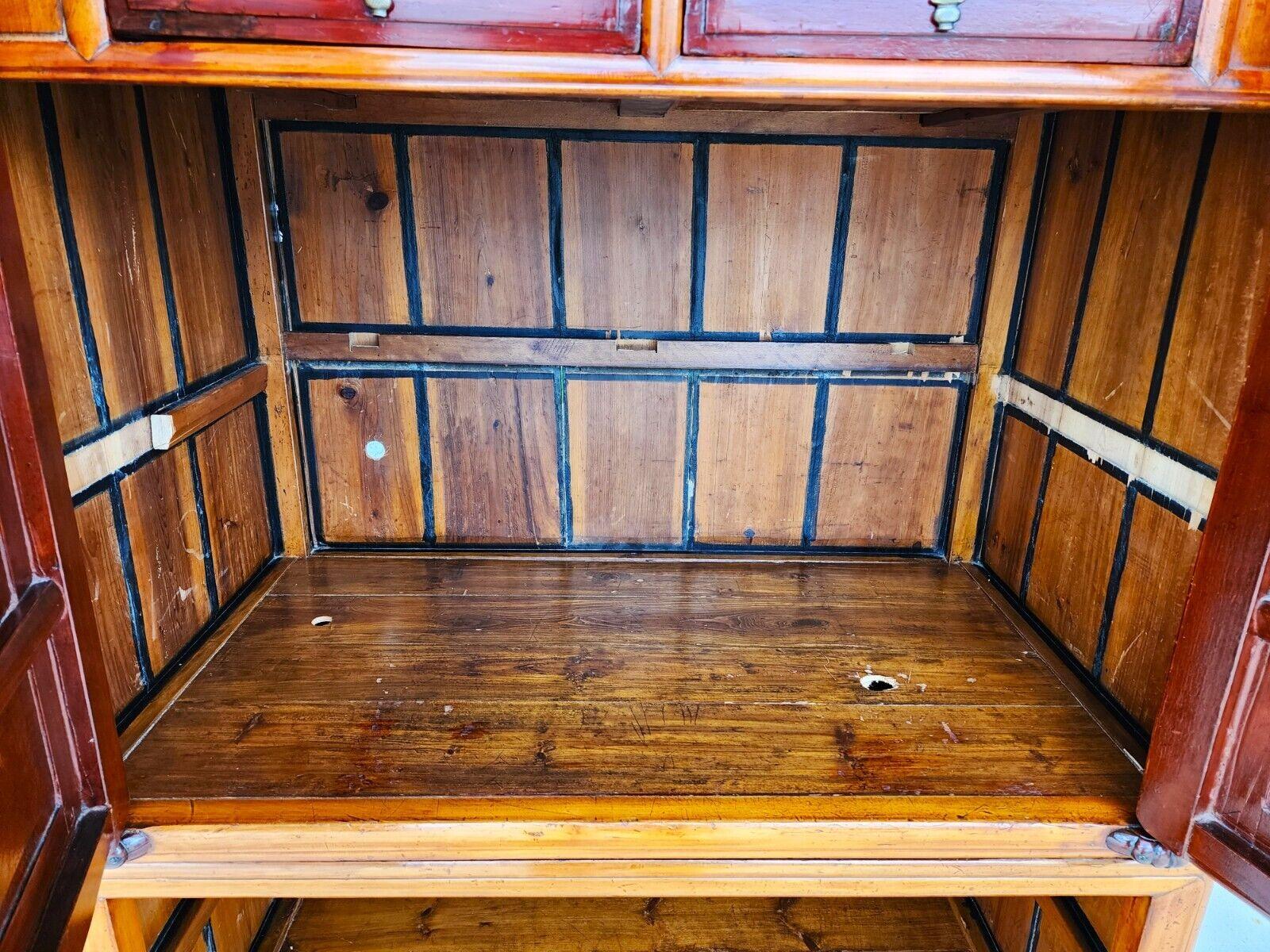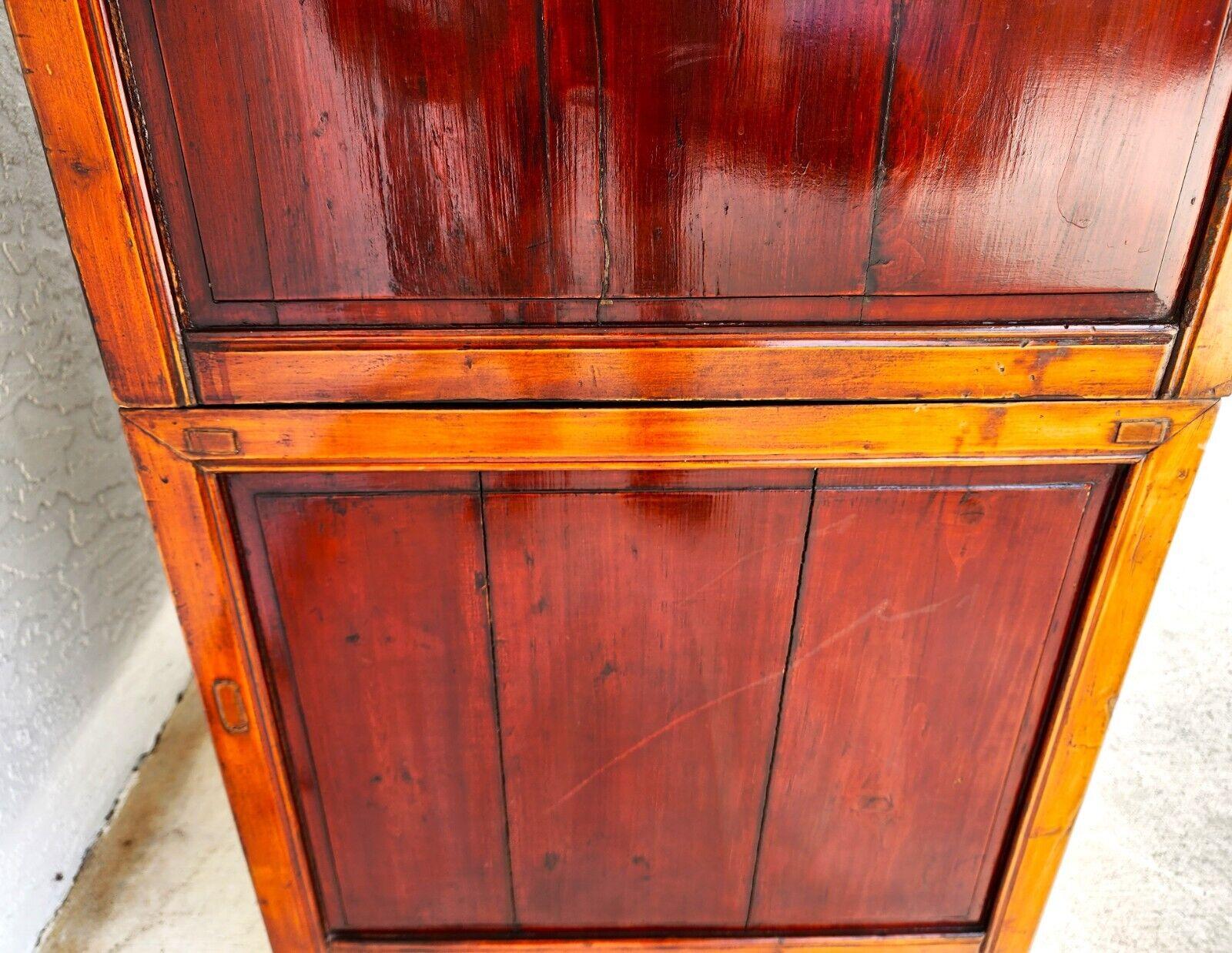Historical Context and Styles
Antique china cabinets from the 1900s reflect the evolving tastes and social trends of the era. They served as a testament to the growing middle class and their desire to showcase their refined possessions. These cabinets, often crafted with intricate details and luxurious materials, played a significant role in defining the aesthetics of the time.
Design Styles
The early 1900s witnessed a shift from the opulent Victorian style to more streamlined and functional designs. Several prominent design movements emerged, influencing the aesthetics of china cabinets.
- Art Nouveau: This movement emphasized organic forms, flowing lines, and natural motifs. China cabinets in this style often featured graceful curves, floral patterns, and intricate metalwork. The use of exotic woods like mahogany and rosewood added to their elegance.
- Arts and Crafts: This movement promoted handcrafted artistry and simplicity. China cabinets in this style often featured sturdy construction, handcrafted details, and natural finishes. They often incorporated elements of traditional English furniture, such as oak wood and hand-carved details.
- Victorian Revival: While the Victorian era was coming to an end, its influence lingered in some furniture styles. China cabinets in this style retained the ornate details and elaborate carvings of the Victorian era but often incorporated more simplified lines and less fussy details.
Materials
The materials used in antique china cabinets from the 1900s varied depending on the style and the manufacturer.
- Wood: Common wood types included oak, mahogany, walnut, cherry, and rosewood. Oak was favored for its durability and rich grain, while mahogany and walnut were prized for their elegant reddish hues.
- Finishes: The finishes used on china cabinets ranged from simple stains and varnishes to elaborate painted designs. Common finishes included oil-based varnishes, shellac, and French polish.
- Hardware: The hardware used on antique china cabinets was often a statement piece. Brass, bronze, and silver were popular choices for handles, hinges, and decorative accents. Intricate designs, such as floral motifs or geometric patterns, were often incorporated into the hardware.
Identifying Features and Characteristics

Antique china cabinets from the 1900s are not just pieces of furniture; they are time capsules that hold stories of a bygone era. Identifying their unique features and characteristics can help you appreciate their craftsmanship and historical significance. These cabinets often reveal details about their origins, materials, and even the tastes of their former owners.
Construction Techniques
The construction techniques used in 1900s china cabinets reveal a blend of traditional craftsmanship and the emerging influence of industrialization. Here are some key features:
- Solid Wood Construction: Cabinets were typically built using high-quality hardwoods like oak, mahogany, or walnut. These woods were known for their durability and beautiful grain patterns.
- Dovetail Joints: Skilled joinery techniques, such as dovetail joints, were used to create strong and lasting connections between the cabinet’s components.
- Mortise and Tenon Joints: Another common joinery technique, mortise and tenon joints, were employed to join the cabinet’s frame, providing stability and strength.
- Hand-Carved Details: Many cabinets from this era featured intricate hand-carved details, often found on the cabinet’s doors, moldings, and legs.
- Glass Panes: The glass panes used in the doors and shelves were often made of thick, beveled glass, adding to the cabinet’s elegance and providing a clear view of the china within.
- Hardware: The hardware used on china cabinets during this period often included ornate brass or bronze handles, hinges, and locks.
Design Elements
The design elements of 1900s china cabinets often reflect the prevailing architectural styles of the time. Here are some indicators:
- Victorian Era: Cabinets from the Victorian era (1837-1901) often featured ornate carvings, elaborate designs, and dark, rich woods.
- Art Nouveau: This style, popular in the early 20th century, was characterized by flowing lines, natural motifs, and a sense of organic design.
- Arts and Crafts: This movement emphasized handcrafted furniture with simple, functional designs and a focus on natural materials.
- Mission Style: Characterized by clean lines, sturdy construction, and a focus on functionality, Mission-style cabinets were often made with dark-stained oak and featured simple hardware.
Glass Types
The type of glass used in 1900s china cabinets can provide clues about their age and style.
- Beveled Glass: This type of glass has angled edges, creating a decorative effect. Beveled glass was commonly used in Victorian-era cabinets.
- Clear Glass: Plain, clear glass was used for practicality, allowing a clear view of the china.
- Frosted Glass: Frosted glass, with a slightly opaque finish, was sometimes used to create a more subtle and diffused look.
- Patterned Glass: Some cabinets featured patterned glass, with etched or embossed designs. These patterns could range from simple geometric shapes to more elaborate floral motifs.
Identifying Hallmarks and Makers’ Marks, Antique china cabinets 1900’s
Hallmarks, labels, and makers’ marks can be invaluable in identifying the origin and maker of a 1900s china cabinet.
- Hallmarks: Hallmarks are often found on the cabinet’s interior, bottom, or back. They may include the maker’s name, location, or a specific design or pattern number.
- Labels: Labels, usually attached to the inside of the cabinet, can provide information about the maker, the period of manufacture, or the cabinet’s specific design.
- Makers’ Marks: These marks are often unique to a specific maker or workshop and can be found on the cabinet’s hardware, glass, or even the wood itself.
Collecting and Appreciation: Antique China Cabinets 1900’s

Collecting antique china cabinets from the 1900s has become increasingly popular, driven by their historical significance, aesthetic appeal, and potential for appreciation in value. These cabinets, often crafted with intricate details and fine materials, offer a glimpse into the past and can enhance the character of any home.
Market Value and Trends
The market value of antique china cabinets from the 1900s varies greatly depending on several factors, including condition, rarity, style, and provenance. In recent years, there has been a growing interest in these cabinets, particularly those made by renowned cabinetmakers or featuring unique designs.
For example, a well-preserved Victorian china cabinet with original hardware and a documented history could fetch a significant price at auction, while a more common cabinet in fair condition might sell for a lower amount.
Factors Influencing Value
Several factors contribute to the value of an antique china cabinet:
- Condition: A well-preserved cabinet with minimal wear and tear will command a higher price than one that has been damaged or restored. Look for original finishes, hardware, and glass.
- Rarity: Cabinets made by specific cabinetmakers or featuring unique designs are more valuable. Research the maker and style to determine its rarity.
- Historical Significance: Cabinets with a documented history or connection to a notable person or event can be highly valuable. For example, a cabinet owned by a prominent family or used in a historical building could be worth significantly more than a similar cabinet without such provenance.
- Materials: The materials used in construction also influence value. Cabinets made from high-quality woods, such as mahogany, walnut, or cherry, are generally more desirable than those made from less expensive woods.
Authenticating and Restoring
Authenticating and restoring antique china cabinets require careful attention to detail and a knowledge of antique furniture.
Here are some tips:
- Expert Evaluation: Consult with a reputable antique appraiser or furniture conservator to authenticate the cabinet and assess its condition.
- Documentation: Research the maker, style, and materials to verify its authenticity. Look for any labels, markings, or documentation that can provide information about the cabinet’s origin and history.
- Restorations: Only use qualified and experienced professionals for any restoration work. Avoid any drastic changes or repairs that could diminish the cabinet’s value. Focus on preserving the original features and materials as much as possible.
Resources for Collectors
- Antique Shows and Auctions: Attending antique shows and auctions is an excellent way to see a variety of china cabinets and connect with other collectors.
- Online Marketplaces: Several online marketplaces specialize in antique furniture, including eBay, Etsy, and LiveAuctioneers.
- Antique Dealers and Galleries: Visit local antique dealers and galleries to browse their collections and seek expert advice.
- Collector Organizations: Joining collector organizations can provide access to resources, information, and networking opportunities. For example, the Antique Furniture Society and the American Institute of Conservation offer resources and support for antique collectors.
Antique china cabinets 1900’s – Antique china cabinets from the 1900s are totally rad, but if you’re looking for something more modern, you could totally rock a living room liquor cabinet for your booze. They can be just as fancy as those old china cabinets, but they’re way more practical for storing your favorite drinks.
Plus, you can always add a few antique touches to make it your own.
Antique china cabinets from the 1900s are totally rad, but let’s be real, they’re kinda bulky. If you’re looking for something more practical and modern, check out the ikea hemnes 4 compartment shoe cabinet. It’s super affordable and can hold all your kicks.
Plus, it’s way more space-saving than a giant china cabinet, so you can actually use your room for other stuff, like, you know, chillin’.

